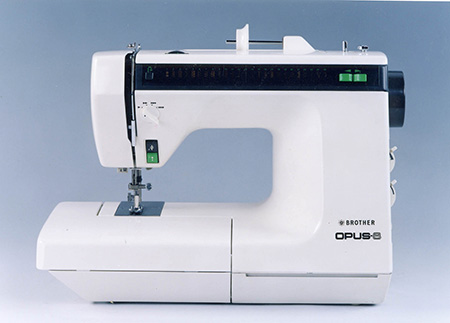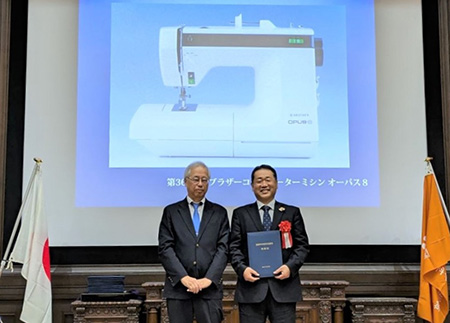ZZ3-B820 (Opus 8), First Computerized Sewing Machine in Japan, Registered as Essential Historical Material for Science and Technology by the National Museum of Nature and Science
September 11, 2024
Brother Industries, Ltd.
Brother Industries, Ltd. (President: Kazufumi Ikeda) today announced that its computerized sewing machine ZZ3-B820 (Opus 8), which it launched in 1979 and was the first microcomputer-equipped home computerized sewing machine from a Japanese manufacturer, has been registered as an Essential Historical Material for Science and Technology (short form: MIRAI Technology Heritage) by the National Museum of Nature and Science, Tokyo, Japan. It was registered on September 10, 2024, and a ceremony to present the registration certificate was held at the National Museum of Nature and Science on the same day.


Essential Historical Materials for Science and Technology is a system in which the National Museum of Nature and Science selects and registers historical materials in science and technology that meet certain criteria, such as by showing important achievements in the development of science and technology and having important significance that should be passed on to future generations. It has been implemented since FY2008, and 18 items have been registered in FY2024, bringing the total number of items registered since the system's inception to 381.
While the HA1 type sewing machine standard drawing in 1952 re-edition, created by the Japan Sewing Machinery Manufacturers Association and owned by Brother, was registered as an Essential Historical Material for Science and Technology in FY2023, this is the first time that a Brother product has been registered.
The ZZ3-B820 (Opus 8) is a home computerized sewing machine based on Brother's proprietary technology that was produced from and launched in 1979. Brother was the first manufacturer in Japan to achieve microcomputer control of the five main functions of sewing machines at the time: pattern selection, the ability to stop the needle at a fixed position, sewing speed, display, and safety. The ZZ3-B820 (Opus 8) was recognized as an important sewing machine as it helped computerized sewing machines become more common in households after its launch, leading to the registration as an Essential Historical Material for Science and Technology.
ZZ3-B820 (Opus 8) Exhibition
National Museum of Nature and Science special exhibition "FY2024 Essential Historical Materials for Science and Technology Registration Panel Exhibition"
From September 10 to 29, 2024, a special exhibition titled "FY2024 Essential Historical Materials for Science and Technology Registration Panel Exhibition" is being held in the central hall on the first floor of the Japan Gallery at the National Museum of Nature and Science, where the actual ZZ3-B820 (Opus 8) and explanatory panels are on display.
- Essential Historical Materials for Science and Technology website (English) (Link to the National Museum of Nature and Science website)
- Special exhibition website (Japanese only) (Link to the National Museum of Nature and Science website)
Brother Museum
The Brother Museum is an exhibition center that conveys the history and evolution of Brother's manufacturing, showcasing its products from the past to the present, and has the ZZ3-B820 (Opus 8) on permanent display as one of Brother's representative products.
Facility information
| Name | Brother Museum |
|---|---|
| Location | 5-15 Shioiri-cho, Mizuho-ku, Nagoya, Aichi, Japan |
| Opening hours | 10:00 a.m. to 5:00 p.m. |
| Closed dates | Saturdays, Sundays, public holidays, Japanese Golden Week holidays, summer holidays, and year-end and New Year holidays |
| Admission | Free |
| Reservations | Required (Please make reservations from the Brother Museum website) |
| Parking | Accommodates up to three large buses or 11 passenger cars |
Please refer to the Brother Museum website for details and the latest updates.

